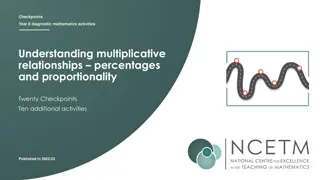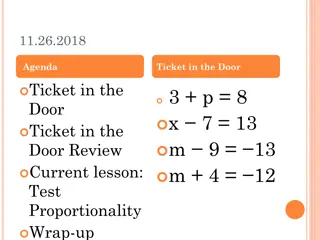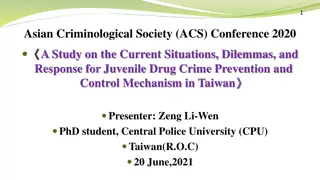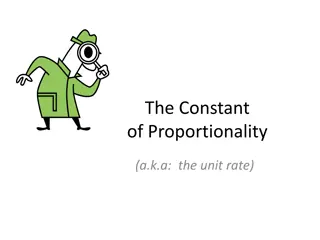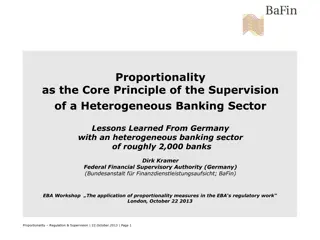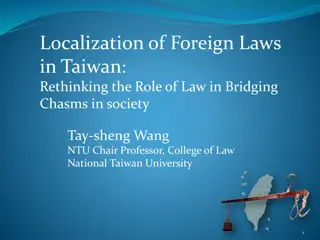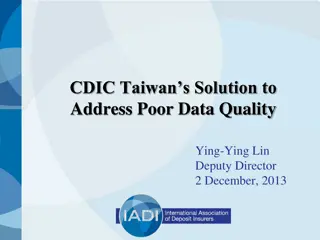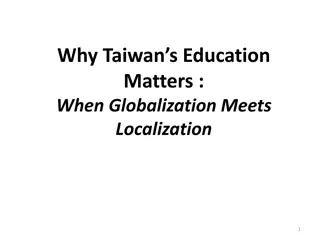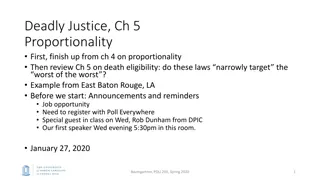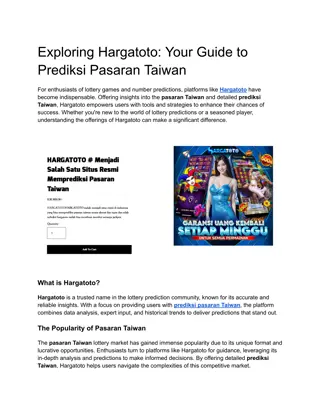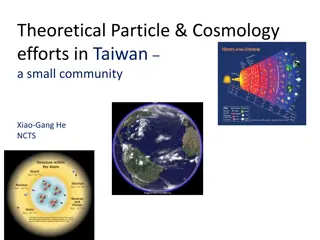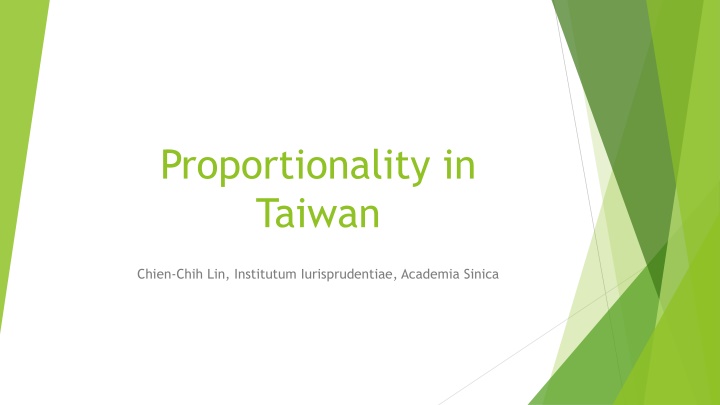
Proportionality in Taiwan: Evolution and Practice
Learn about the evolution and practical application of proportionality in Taiwan's legal system, from the Constitutional Court's interpretation to the adoption of various tests and its impact on governmental decisions. Explore how the concept has transformed over the years and its significance in safeguarding rights and freedoms.
Download Presentation

Please find below an Image/Link to download the presentation.
The content on the website is provided AS IS for your information and personal use only. It may not be sold, licensed, or shared on other websites without obtaining consent from the author. If you encounter any issues during the download, it is possible that the publisher has removed the file from their server.
You are allowed to download the files provided on this website for personal or commercial use, subject to the condition that they are used lawfully. All files are the property of their respective owners.
The content on the website is provided AS IS for your information and personal use only. It may not be sold, licensed, or shared on other websites without obtaining consent from the author.
E N D
Presentation Transcript
Proportionality in Taiwan Chien-Chih Lin, Institutum Iurisprudentiae, Academia Sinica
The Adoption of Proportionality (I) The Constitution does not explicitly prescribe proportionality, but Article 23 of the Constitution All the freedoms and rights enumerated . . . shall not be restricted by law except such as may be necessary to prevent infringement upon the freedoms of other persons, to avert an imminent crisis, to maintain social order or to advance public welfare. The Constitutional Court sees this article as the embodiment of the legitimacy test and the necessity test. The Court invoked the necessity test in 1964 for the first time. The Court expressly mentioned the word proportionality for the first time in 1996.
The Adoption of Proportionality (II) Taiwanese version of proportionality at one time: due purposes, necessary means, and proper restrictions. The TCC put the suitability test back to proportionality several years later in 2002. The TCC has not simply transplanted proportionality from Germany, but also distinguishes different levels of review scrutiny, depending on the subject- matter at issue. Institutional reason: Justices with scholarly backgrounds Political reason: the dramatic change of political atmosphere in Taiwan
The Practice of Proportionality (I) number of decisions number of decisions with PP 30 28 27 27 25 21 24 20 20 18 18 17 16 17 16 16 15 14 15 13 12 12 10 9 9 9 8 10 8 7 7 7 6 6 5 5 4 5 5 4 4 4 8 3 5 3 3 2 2 1 0 1996 1997 1998 1999 2000 2001 2002 2003 2004 2005 2006 2007 2008 2009 2010 2011 2012 2013 2014 2015 2016 2017
The Practice of Proportionality (II) All Decisions Unconstitutional Constitutional Apply Proportionality 113 56 57 Apply Legitimacy 20 1 19 Apply Suitability 78 72 32 8 21 5 70 51 27 Apply Necessity Apply Balancing
The Practice of Proportionality (III) Apply proportionality in one-third of the cases. Approximately half of them are against the government, which is higher than average. The TCC does not always apply the four subtests in a case. suitability test > necessity > balancing > legitimacy The necessity test is the most preferred weapon of the TCC Rarely question the legitimacy of governmental goals Apply the Balancing test more frequently
The Transformation of Proportionality (I) During the authoritarian period, the necessity test, which was close to the Wednesbury unreasonable test, was used to justify and undergird the legitimacy of the authoritarian regime. After democratization, the TCC has applied proportionality more frequently and rigorously. the TCC has fused proportionality in German constitutional jurisprudence and the tiered standards of judicial review in American constitutional jurisprudence into Taiwan s proportionality different levels of legitimacy test, different levels of suitability test, and so on.
The Transformation of Proportionality (II) In reality, however, the Court has not yet developed a systematic and coherent theory as to which subject- matter corresponds to which degree of rigor. sometimes the application of proportionality of the Court is, to paraphrase the famous words of Gerald Gunther, strict in theory and lenient in fact. In other words, the Court ruled in favor of the government even though its reasoning was literally very demanding. the practice of proportionality has been criticized as somewhat chaotic and unpredictable
Proportionality and Enforcement of Human Rights the TCC invokes proportionality mostly in the domain of civil and political rights, but the application of proportionality in Taiwan is not limited to negative rights; it also includes positive rights. The Court never applies proportionality when it tackles equal protection issues, notwithstanding its wide use of the doctrine. This may be attributed to the analytical structure of equal protection, in which Justices gravitate toward the tiered review standards.

